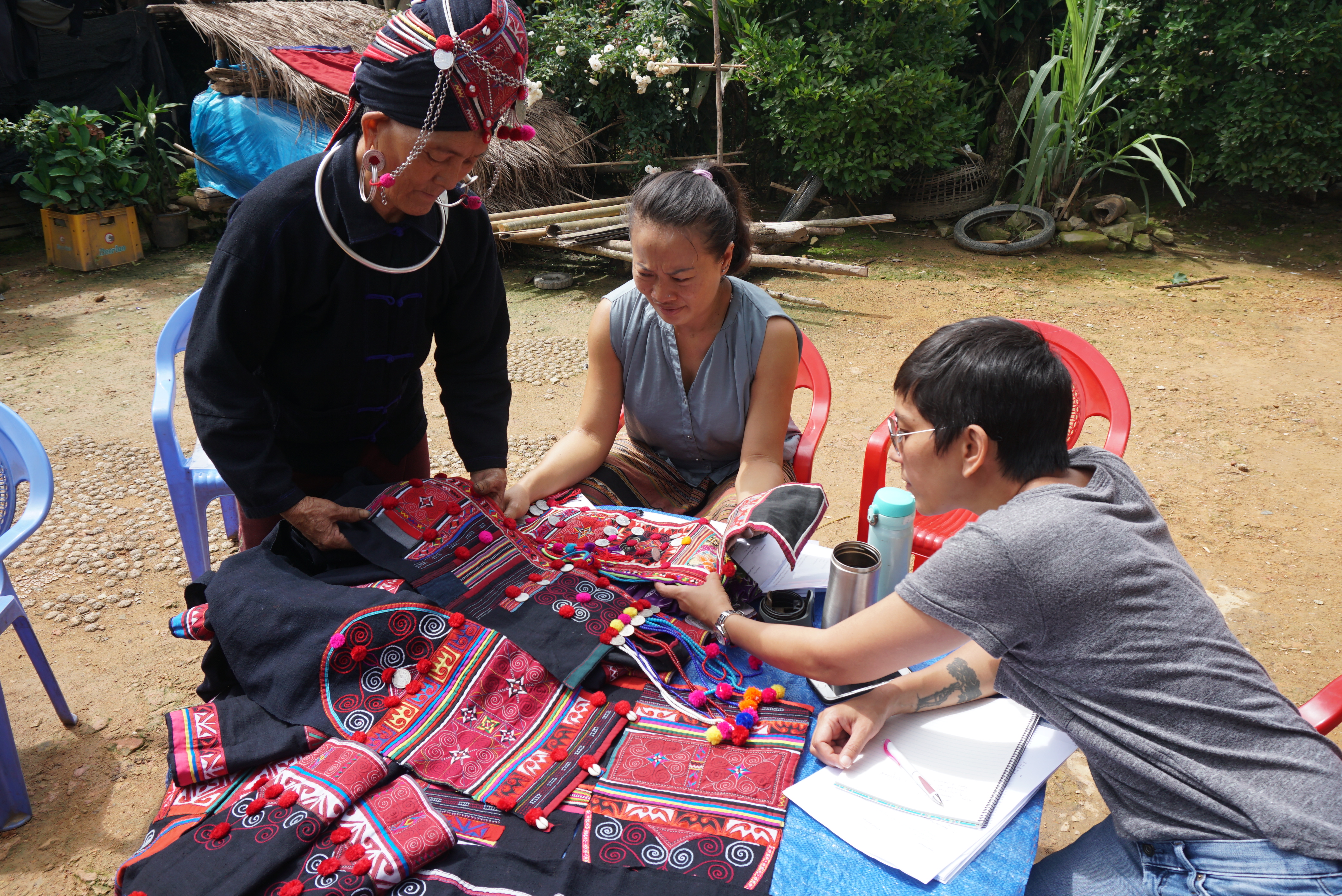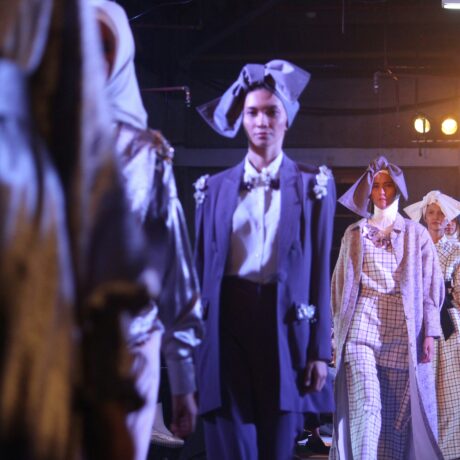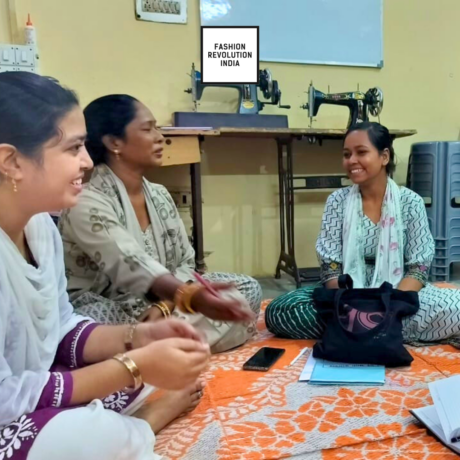#NotPublicDomain: Indigenous communities combat cultural appropriation with traditional textile design database
Will cultural appropriation in the fashion industry ever end? How can artisans protect their traditional cultural expressions? Is it possible for designers to work in an ethical way with Indigenous communities? These are the questions that a groundbreaking new digital database aims to challenge by protecting the culturally significant designs of ethnic groups from misappropriation and misuse.
Back in 2019, MaxMara was found selling clothing decorated with patterns that looked identical to the traditional embroidery and appliqué designs of the Oma people. The Oma are an ethnic minority group of about 2,800 people living in the remote mountains of northern Laos, recognised in the region for their hand-spun, indigo-dyed clothing decorated with vibrant red embroidery and appliqué.
Unlike the authentic Oma designs, the MaxMara replica patterns were printed on the fabric, not hand-embroidered or hand sewn. In addition, there was no garment label acknowledging the textile designs as belonging to the Oma, generating a risk of cultural dilution of Oma intangible cultural heritage.
When informed of the situation, the Oma people of Nanam Village confirmed that they had no knowledge of the use of their designs and motifs by the fashion company and that they were not requested permission for digitising the designs for production and sale. They were surprised to see their traditional textile designs reproduced with machines by people outside of the Oma community, and commercialised without their consent and without any compensation.
In response to the social media campaign and international press, MaxMara responded with demands to remove the posts they qualified as defamatory and damaging to the reputation of the company, and threatened to take legal action in the event of non-compliance. They also asserted that the allegedly copied design was elaborated in an original way, and inspiration was taken from the pattern of a vintage fabric which the company considered as being in the public domain.
As a result, Cultural Intellectual Property Rights Initiative® (CIPRI), Traditional Arts and Ethnology Centre (TAEC) and the Oma of Nanam Village in Laos have developed a new digital database that documents a multitude of traditional garments, motifs and techniques that are culturally significant to the Oma in various ways. The ‘Documenting Traditional Cultural Expressions: Building a Model for Legal Protection Against Misappropriation and Misuse with the Oma Ethnic Group of Laos‘ report details the purpose and process of creating this database, its legal framework, and the impact on the community.
The Oma Traditional Textile Design Database© now serves as a tool for asserting cultural intellectual property rights for the Oma people of Nanam Village in Laos, and as a legally defensive tool to protect against the unconsented use of the Oma’s Traditional Cultural Expressions (TCEs). Additionally, the Database is a means to document TCEs for the community at large to ensure cultural continuity, and provide a rich source of research to facilitate collaboration between Oma artisans and fashion and textile companies.
Most importantly, the model of the Database can be licensed, royalty-free, by any other Indigenous group, ethnic group or local community that wants to develop cultural intellectual property protection. This opens new doors to respectful collaboration between brands and Indigenous communities, providing hope for a fashion future without commercialised cultural appropriation.
Here, we talk to CIPRI founder Monica Boța-Moisin to find out more about the journey of developing this unique project, its implications for the legal governance of fashion design, and why cultural sustainability matters.
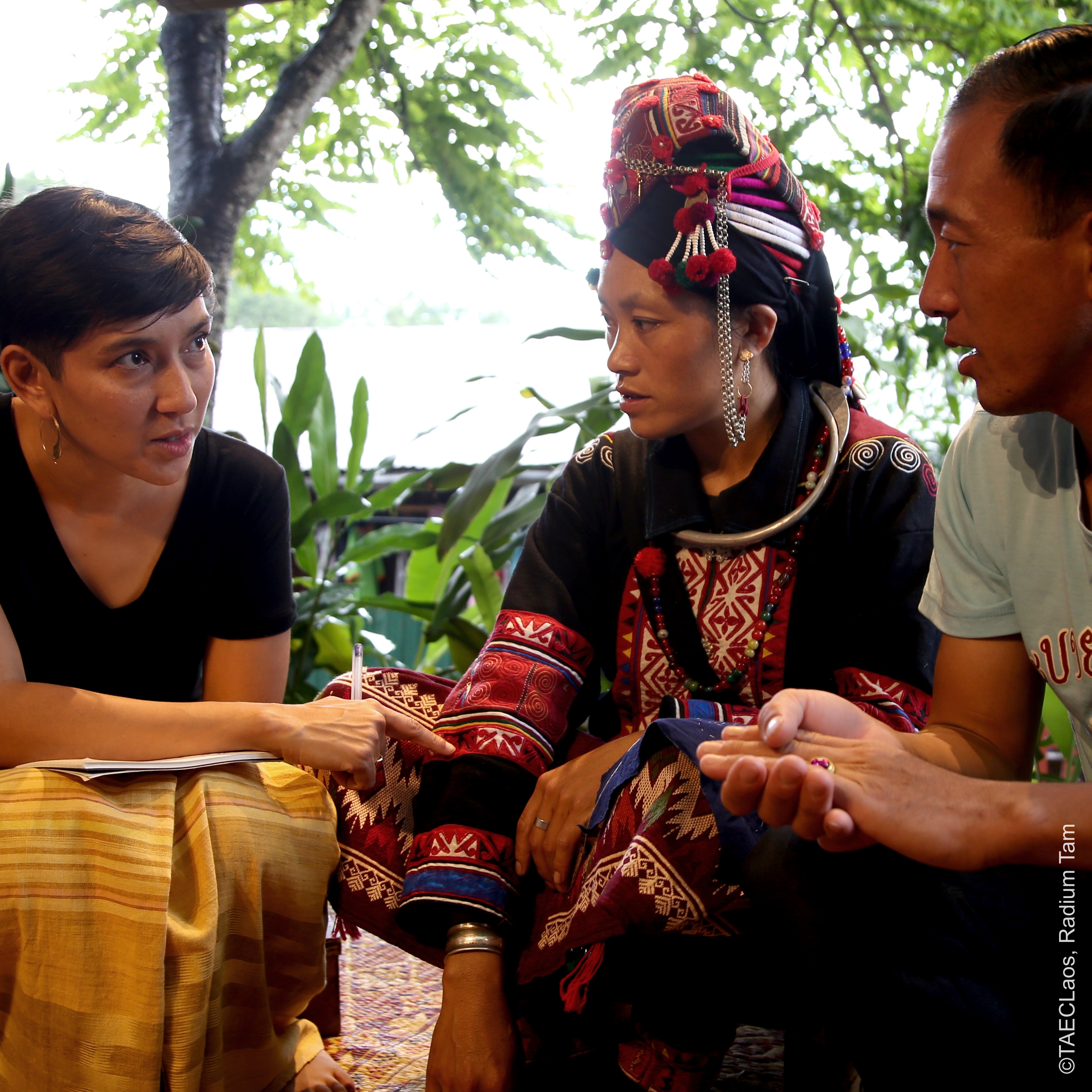
How does this project put the theory of protecting cultural expressions into practice in a tangible way?
The database has multiple functions – on one hand, it is proof of this custodianship relationship, in the absence of a globally applicable legal framework to protect Traditional Cultural Expressions. It’s a public forum through which the community can prove they are custodians of this knowledge. Another important feature of the database is that you can learn about the Oma and the frameworks that they would ideally collaborate in. However, part of the database is private and you cannot get access to the content unless you initiate this discussion and you get the prior consent of the Oma.
With this database, we are also challenging the myth that the public domain is something that we can all take from and do whatever we want with. We haven’t yet changed international law with this database. It’s not like from now on Traditional Cultural Expressions are no longer in the public domain, but it is a step in the right direction. This is a debate that has to begin, and then laws will follow and misconceptions will change.
We have to look back at where the system came from. And at the time when we started speaking about intellectual property rights, nobody could have probably ever imagined that we would get to this paradox where corporations that are protected through IP tools, like trademarks, like industrial design, like patents, then put this trademark on someone else’s identity. Because it’s not just a matter of intellectual property. It’s a matter of commercialising someone’s identity.
In developing the database, what were the biggest challenges you came across and how did you overcome them?
Well, it’s been a complex process that requires funding and takes a lot of time and cross-disciplinary expertise. Going through the process with a community was pioneering in itself. There are certain collections of knowledge in parts of the world, but to go and create a traditional textile design database is something that we took the first steps in.
We had to be very careful every step of the way because every action has a consequence. The process of Free Prior Informed Consent, explaining what are the consequences of digitising this kind of knowledge, we thought of all possibilities and the measures that we have to take to prevent the negative consequences from happening. The work of TAEC was essential for the success of this endeavour. There is a need for on-the-ground experience and understanding of the local handicraft ecosystem, anthropological and ethnographic studies in the area. And then the legal theory on top. So it’s a very complex, time-consuming, resourceful process. And it needs much more support for the model to be replicated by communities across the globe.
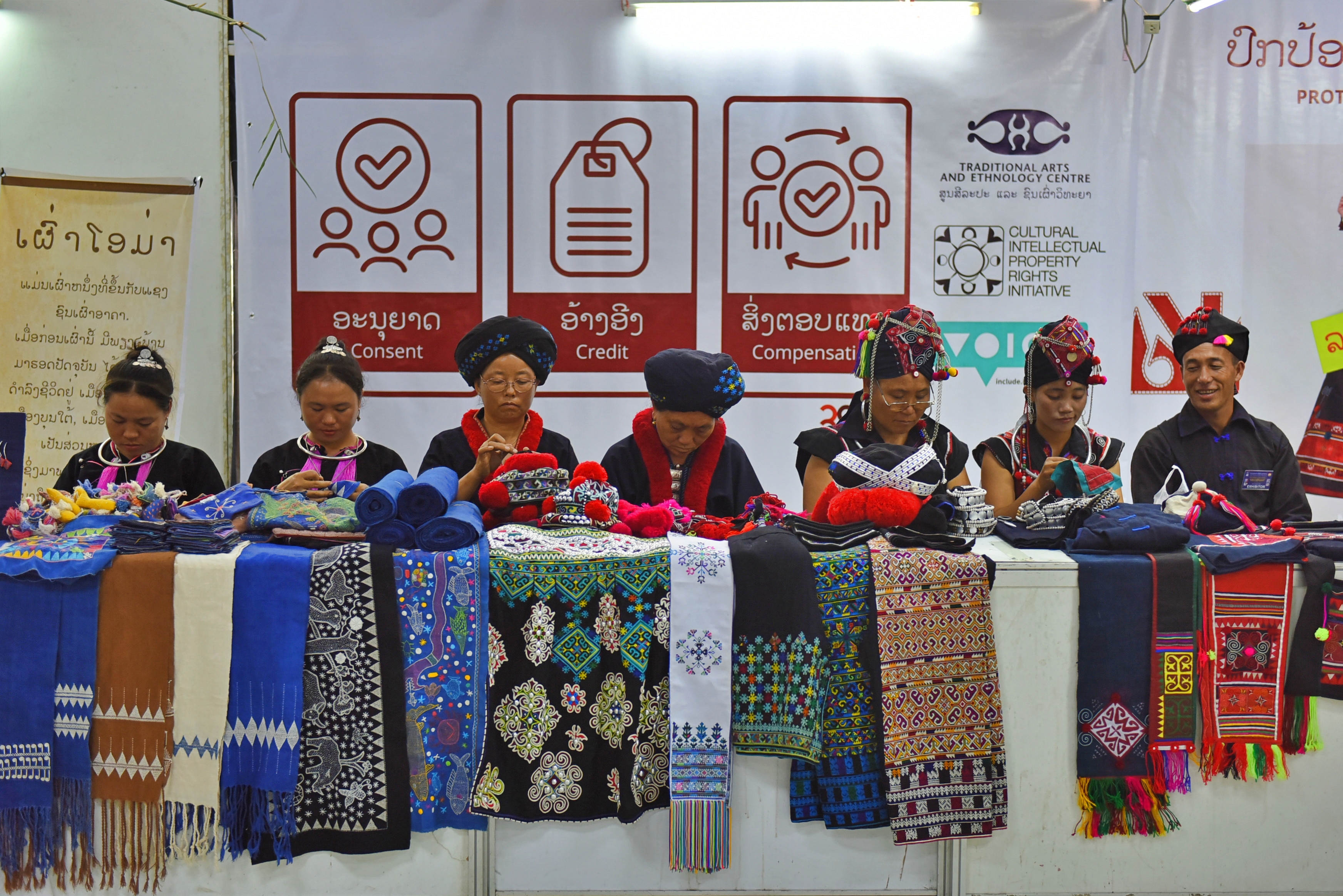
Could you explain why The 3Cs’ Rule of Consent. Credit. Compensation© matters for the fashion industry to collaborate respectfully with artisans and Indigenous communities?
It is my life’s mission to work to build bridges between the fashion industry and Indigenous communities, ethnic groups and local communities. So it’s sometimes difficult to even pinpoint why I find this important because I feel any kind of exploitative behaviour should not be part of how we live. The most amazing things happen when we learn to value and appreciate knowledge. And this also means the knowledge of parts of the population that we are not used to seeing as business partners. It is a change to reimagine collaborative models and there’s a lot of opportunity there for both to grow.
I believe in knowledge exchange and knowledge partnership, and I think we cannot speak about fairness, equity and good working conditions when we exploit anyone’s time and knowledge. We know so well that different forms of exploitation are still part of how the fashion industry works. For example, how many people haven’t been equitably compensated for their internships in the industry? So it’s important to be clear, transparent to ask for Free Prior Informed Consent, and to communicate what you want to do with this knowledge. What do you want to do with this collection? What implications can it have on the community? If it booms, could you continue to produce at scale or can you licence the designs? Or would the community be okay with seeing digital prints of these designs?
Obviously, there are many elements of financial sustainability that need to be taken into consideration in a collaboration like this too. But that doesn’t mean that the fashion company is always the one that can dictate the rules. So this communication and this partnership are vital. People who are engaging in these conversations often want to solve someone else’s problems, instead of giving them the tools to do it themselves or recognising their value. Because I think a lot of these problems that we try to solve from top-down could be solved at ground level. If communities would be remunerated or part of an ecosystem that values what they know to do best, they would have more time and resources to have access to education. They wouldn’t live in poverty if they would be paid for the time and knowledge of their handcrafted work.
A lot of people in the world still refer to handcrafted production as a cottage industry, it’s basically working from home. So we’re all a cottage based economy now in the pandemic. If we change this behaviour, the concept of exploitation of humans by humans, if we can eradicate that, we will solve so many of the endemic problems like poverty, discrimination and lack of access to education.
Why is it important to encourage and enable collaboration in this way, rather than simply to condemn cultural appropriation altogether?
I’ve always been an advocate for finding a way to work together. Ideally, there would be by now a focus in companies to have a department that tackles these issues. At the Cultural Intellectual Property Rights Initiative®, we have the expertise to educate fashion brands on how to create internal policies to avoid cultural appropriation and focus on cultural sustainability.
But it’s also important to keep having these cultural exchanges and creating. So it’s not about not getting inspiration from traditional textiles, it’s about building together. And to do that there needs to be alignment between words and actions. You cannot have a fashion company that has culturally appropriated and then look at their CSR policies and see that one of their aims is to alleviate poverty. It just doesn’t make sense. It doesn’t align. So once we formulate the good intentions we have to think about where to direct them.
The database has legal protection behind it and is the beginning of a much bigger, potentially worldwide replicable model. Ultimately it also symbolises that we are ready and open to work together with fashion brands and find constructive solutions.
For a designer or brand who wants to collaborate with producers of traditional textiles such as the Oma people, how would they go about this?
Reach out! We are now looking for the first fashion collaborators for the Oma. If brands want to work together, they would have to enter the database, write to an email address there that links to the Traditional Arts and Ethnology Centre, then we will have joint discussions and shape this collaboration together. Myself and TAEC have been empowered by the Oma of Nanam Village to represent them legally, so there’s this kind of multi-party representation at the moment.
At the Cultural Intellectual Property Rights Initiative®, we are assisting both fashion companies and local communities and we can intermediate this process. For this, the experience of doing fieldwork in India has been extremely valuable. And I think all the lawyers that work in this space need to have some direct interaction with communities to be able to immerse in that cultural context and understand the complex dynamics in these communities as well. We have these kinds of tough conversations with everyone who approaches us, irrespective of their role. And I think the landscape of how these collaborations are forming is a very interesting space, where we feel our work is valuable.
You use the hashtag #NotPublicDomain to discuss this work, but why is that Traditional Cultural Expressions should not be in the public domain?
The idea of something being in the public domain means, on the one hand, that it’s not protected by copyright or IP tools in general, and that it can therefore be used and exploited without the need to ask for consent. There is inequality by default that these expressions are not protectable under the conventional IP system, despite certain specific customary laws applying to them. This automatically leaves them in the public domain, which makes them automatically vulnerable to use without consent.
The conventional and existing IP system doesn’t protect this type of work, but it doesn’t mean that you should be exploiting it however you want because the community has certain rules, and this is where the customary laws come into play. These communities never signed an agreement saying we abide by the International IP rules. The IP system, like anything in this world, is an invention – we all decided, when you create something, we’ll call you the author. And because you’re the author, we will give you some money for it. And you have the right to be named the author, and you also have the right to decide how your work is being exploited commercially, whether your work can be translated into a different language, etc. That’s something that you can decide. These mechanisms do not exist yet in the space of Traditional Knowledge and Traditional Cultural Expressions.
I always say the limits of the public domain are being challenged because these communities finally have a chance to explain their position, they want to be involved in the process of decision making of what happens to their intangible patrimony and their heritage. And they should have the right to do that. So we can now invent a system that also takes their interest and their particular works into account.
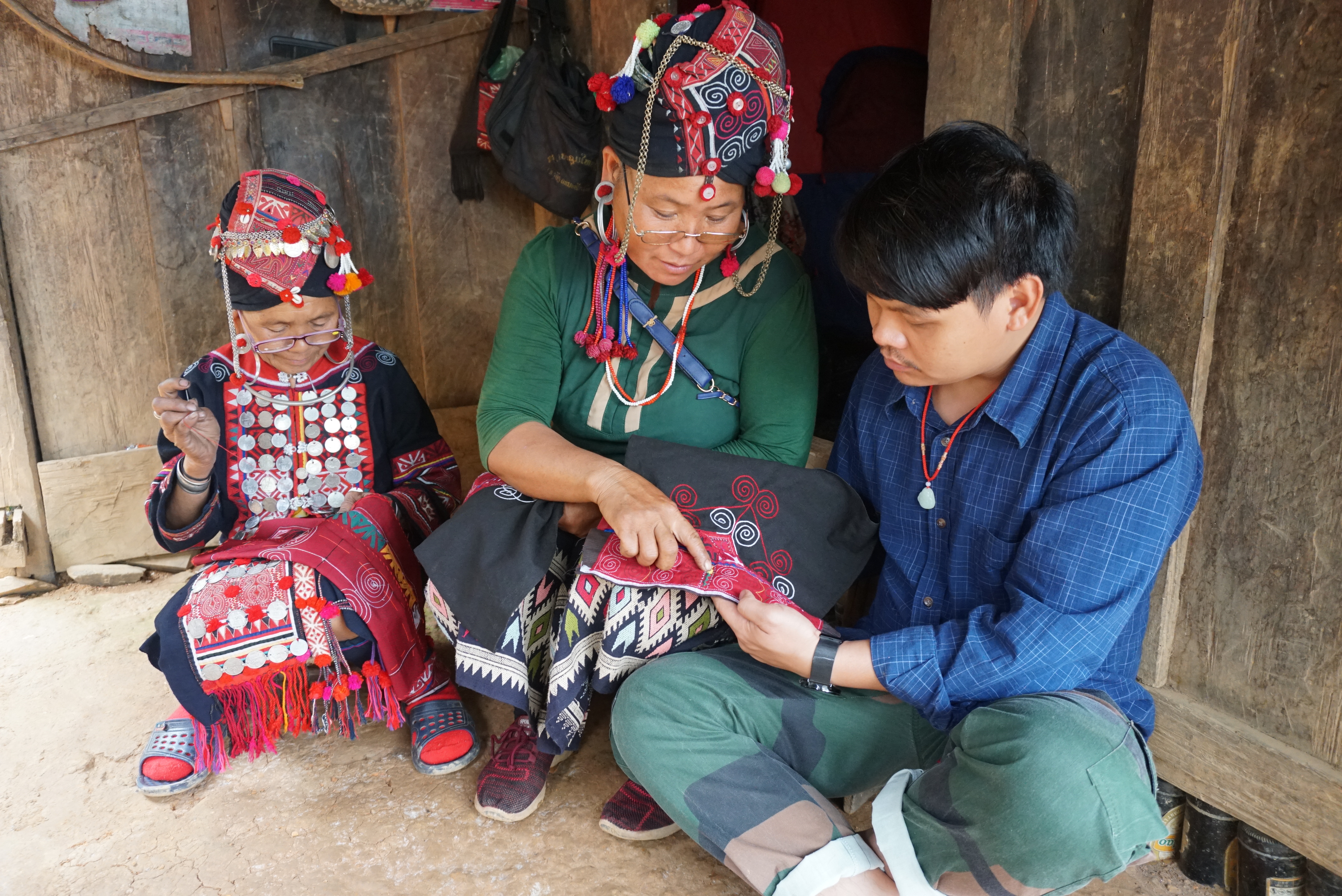
What are the implications of this project for other Indigenous communities, ethnic groups and artisans beyond the Oma in Laos?
The great outcome of this project is that a template of the database is available for free for anyone who wants to work on a similar endeavour. TAEC and CIPRI are committed to supporting any community that reaches out to us and says they want to go through the same process.
How does this project align with the UN Sustainable Development Goals and why was this important to include?
Because there’s so much talk from corporations and industry stakeholders on working towards achieving the goals by 2030. But I think people fail to see how much cultural sustainability has to play in the sustainability narrative, and how cultural sustainability is actually embedded in the Sustainable Development Goals. In my workshops, I work specifically with 8 of the 17 goals that expressly refer to cultural sustainability, but nobody communicates that as a pillar in itself, so how are we gonna achieve the goals by 2030?
So with this project having such a strong cultural sustainability component, it was important that we show how the project aligns with the Sustainable Development Goals. And obviously, these communities have so much knowledge of how to maintain biodiversity and natural rhythms in the region where they are, so that contributes to environmental sustainability. Everything is so connected.
Finally, what does cultural sustainability mean to you?
We can look at the culturally embedded values and practices that have been maintained in a society from generation to generation, because of their positive outcomes. To exemplify, we can look at the principle of design to minimise waste, this has always been embedded in how all ethnic groups, local communities and Indigenous people have created their traditional garments.
Like in Romania with hemp fibre, it took so much time to spin that yarn and weave that cloth, so you don’t want to waste it. It just wasn’t part of the design thinking because they weren’t creating for consumption, they were creating for wellbeing. So cultural sustainability is about ecosystemic thinking. And that’s why it should be the basis of all sustainability actions.
Further reading and watching
Securing Cultural Intellectual Property Rights For The Oma People Of Nanam Village In Laos
Traditional Arts and Ethnology Centre: Intellectual Property Rights for Traditional Artisans in Laos




